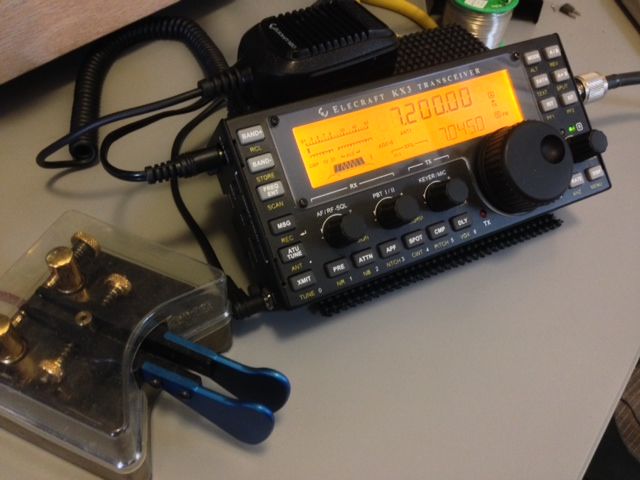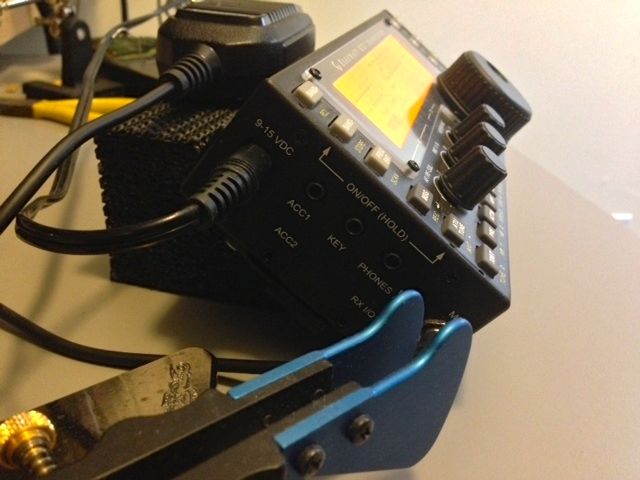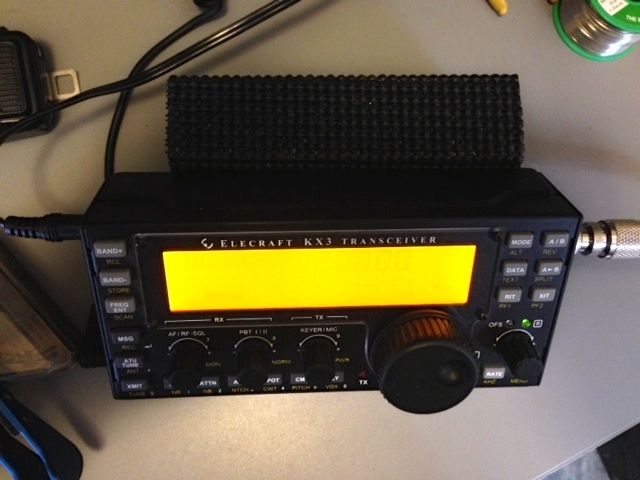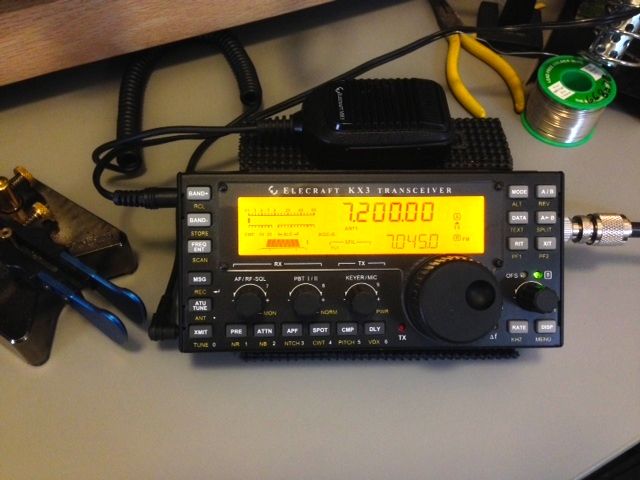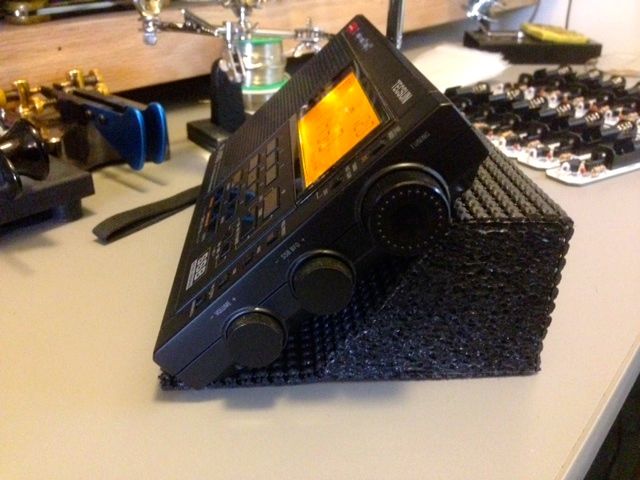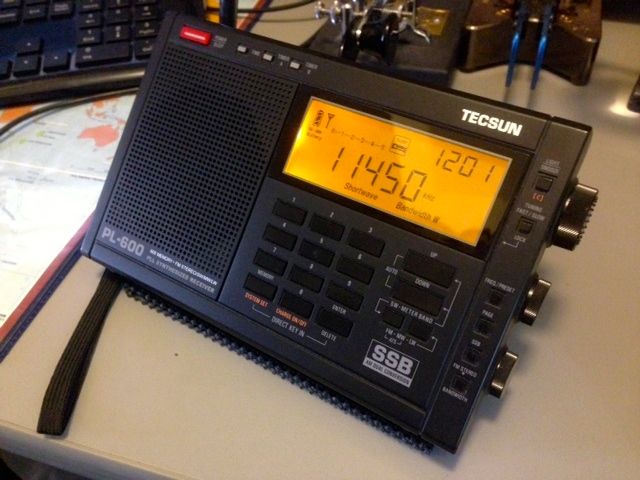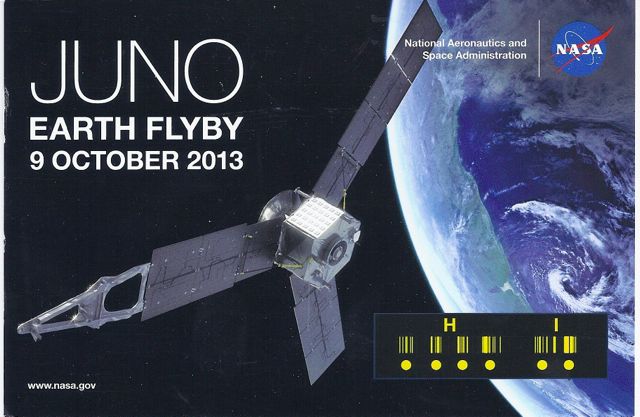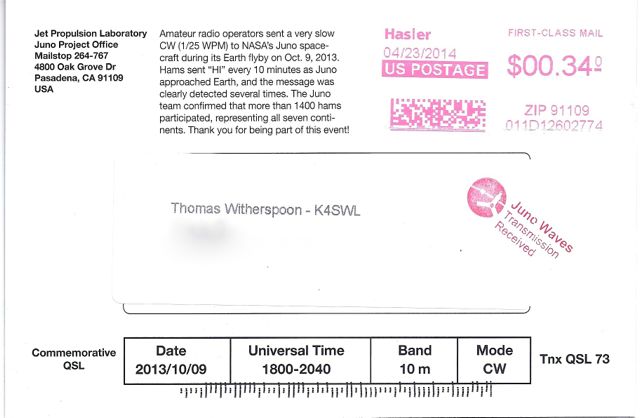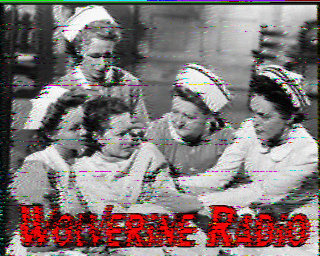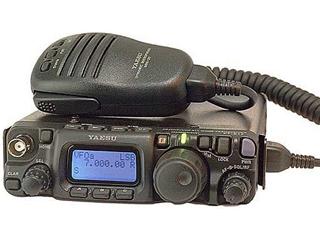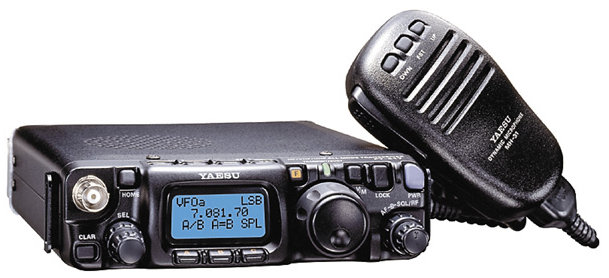I recently purchased the KX3 helper from Steve (W1SFR) and can report that I’ve been very pleased with this uber-simple, affordable, non-slip tilt pad.
While I like the built-in tilt legs on the Elecraft KX3, I prefer slightly more angle for operation on my desktop. The KX3 helper allows you to chose a number of positions and angles for the KX3.
What I love most is the fact that it will not slip while you’re tuning or making adjustments to the KX3 (even if inserting Mic or Key plugs).
The little shelf on the back of the KX3 helper is the perfect place to hold your microphone when not in use.
Though Steve produces a number of non-slip wedges (and many other accessories), I find the size of the KX3 helper to be ideal for many of my portable shortwave radios as well. Here’s the Tecsun PL-600 for example:
At $13.45 US shipped, I believe the KX3 helper is a true bargain. Plus, you’re buying from a fellow radio hobbyist who does this sort of thing out of his passion for radio. Check out all of Steve’s radio accessories by clicking here.

